#Olymbos
Explore tagged Tumblr posts
Photo
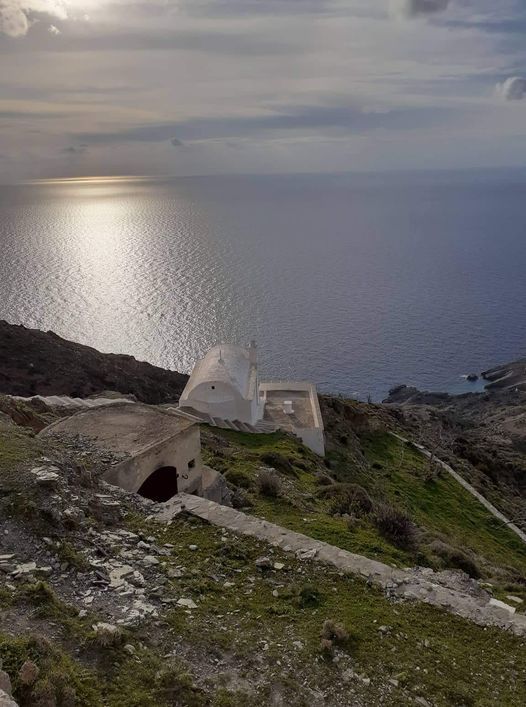
Karpathos. Olymbos
Photo by John Karageorgiadis
39 notes
·
View notes
Photo

Takis Tloupas , Sunset at Platamonas, Olymbos, 1968
#Takis Tloupas#vintage#black and white photography#sunset#Greece#Platamonas#Olymbos#60's#Olympos#mine
21 notes
·
View notes
Photo
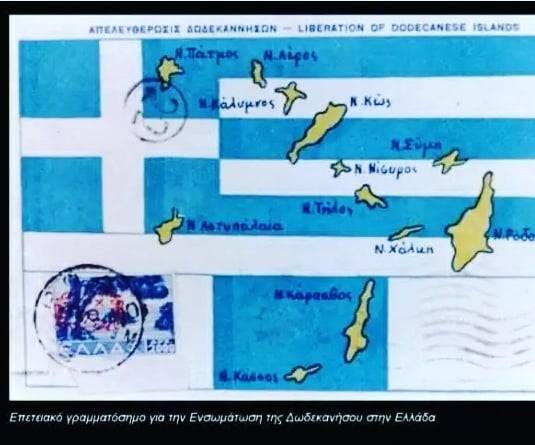
07/03/1948 🇬🇷 Dodecanese islands belong to Greece again 🇬🇷 Χρόνια πολλά στα νησιά μας! 🧿 #nikosboat #nikoshotel #diafani #olymbos #Greece #dodecaneseislands #discovergreece #discoverkarpathos #2021destinations #karpathosisland #aegean #aegeansea #thaksanartho #διαφανι #καρπαθος #7march #independence #nationalday #rhodes #karpathos #simi #kasos #patmos #leros #kos #kalymnos #nisiros #tilos #astipalea #chalki (στην τοποθεσία Diafani, Dhodhekanisos, Greece) https://www.instagram.com/p/CMG_OqlhN8S/?igshid=1wwur1t9x8gpu
#nikosboat#nikoshotel#diafani#olymbos#greece#dodecaneseislands#discovergreece#discoverkarpathos#2021destinations#karpathosisland#aegean#aegeansea#thaksanartho#διαφανι#καρπαθος#7march#independence#nationalday#rhodes#karpathos#simi#kasos#patmos#leros#kos#kalymnos#nisiros#tilos#astipalea#chalki
0 notes
Photo

A caelo usque ad centrum. (at Олимбос)
0 notes
Text
The Church of Agios Dionysios of Olymbos is, depending on your perspective, one of the most beautiful churches on the island of Crete.

Situated just west of Chania in Kalamaki, it is undoubtedly one of the most photographed.
Why not pop over to our Insta page at:
https://bit.ly/Insta-GoExploreGreece
#travel#goexploregreece#mustsee#greek#greece#beautiful views#mustvisit#europe#isle of crete#cretegreece#creteisland#crete#churches#church#aegean#photooftheday
1 note
·
View note
Text
Five “Secret” Greek Islands
A Greek Island escape makes the perfect holiday, but with around 1,400 islands in the Greek archipelago, choosing a destination that is not overrun with holidaymakers can be a challenge. While Corfu and Crete are deservedly popular, especially with first-time Greece travelers, here are five ‘secret’ Greek islands that should be on your itinerary.
Kea
Part of the Cyclades, and close to the mainland, laid-back Kea is no secret with the locals who flock here to their weekend retreats. Ferries to Kea leave from Lavrio, a 90-minute bus trip from Athens. Kea has a laid-back atmosphere, good walking trails, and 50 miles of coastline with tiny bays and unspoiled sandy beaches. Ioulidha, has some holidays on crete charming tavernas, while the delightful hill capital of Ioulis, the marina at Vourkari and Otzias Bay are other highlights.
Evia
Dominated by Mt Ochi, this Greek island ‘secret’, is really the second-largest Greek island after Crete. With remote villages nestled in the mountain slopes, connected by stone paths and tracks, it’s a walker’s delight. But add a captivating coastline, plenty of Roman ruins, old buildings, secluded beaches, and a wide choice of lively tavernas, and you have the perfect holiday ingredients.
The walks traverse lush valleys with old stone bridges fording streams, watermills and fountains. The walk to the Dimosaris Gorge ends at the village of Kalliani. Like Kea, you can get the ferry here from Athens. The capital, Karystos, overlooks the Aegean Sea and the Cycladic Islands in the south. Roman aqueducts, Byzantine churches and Frankish castles are interspersed with olive and fruit groves, vineyards and cypress trees and deserted beaches and coves are perfect for swimming and snorkelling.
Kalymnos
Mountainous and picturesque Kalymnos, set between the islands of Leros and Kos in the Dodecanese, is renown for its sponge divers. It is a beautiful Greek island and way less touristic than its neighbour Kos, since it’s black-sand beaches are not as attractive for swimmers. For nightlife head for Masouri, but at Vathi, a haunt of yachties, you can dine on fresh seafood and afterwards dive into crystal clear water from the little jetty. You can reach Kalymnos by ferry from Peiraias.
Karpathos
The Aegean Dodecanese Islands, of which Karpathos is the pick, has a wild, natural beauty in the north, and is tamed and tranquil in the south. Sharp mountains, uncrowded beaches and tracks ideal for hiking make Karpathos the perfect Greek holiday experience, only without the hordes. The village of Olymbos has distinctive windmills that produce flour, while the surrounding countryside grows olives, grains, fruits, vegetables, and grapes that produce a distinctive local wine. Diafani has the remains of a Minoan settlement and Hellenistic-era public baths.
Nisyros
Between Kos and Tilos this tiny volcanic Greek island caters mainly to day-trippers although hotel and villa accommodation is available. Ferries run between Piraeus on the mainland and Rhodes. Be sure to visit the volcano crater, view fuming mini craters and walk the pathways of the dramatic and mountainous interior. Perhaps try the sulphurous waters of the health spa. There are many charming Orthodox Christian churches as well as four uninhabited monasteries, the largest is built beside a medieval fort.
1 note
·
View note
Photo
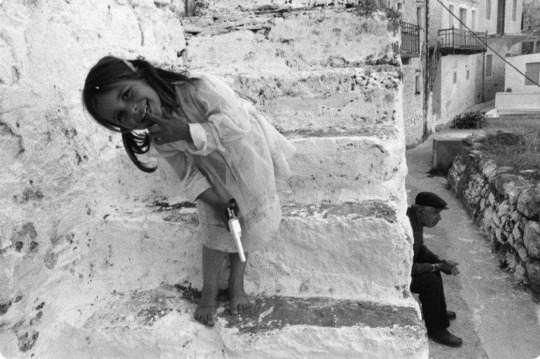
Nikos Economopoulos Olymbos Village, Karpathos Island, Greece 1989
39 notes
·
View notes
Text
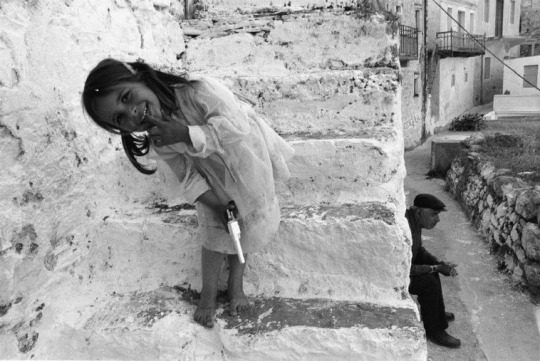
Nikos Economopoulos (Greek photographer born in Kalamata, in 1953), Olymbos Village, Karpathos Island, Dodecanese, Greece, 1989
19 notes
·
View notes
Photo

Greece. Dodecanese. Karpathos Island, Olymbos Village. 1989.
@Nikos Economopoulos
60 notes
·
View notes
Photo
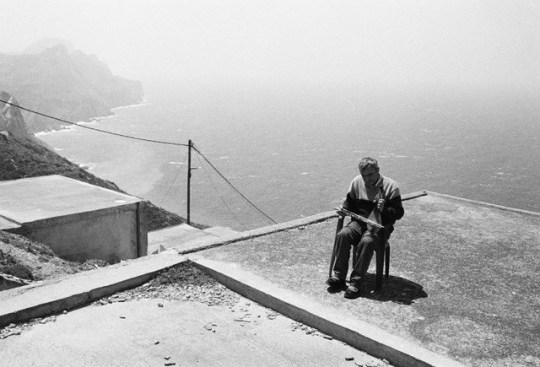
Nikos Economopoulos, Karpathos island, Olymbos village, Greece
A local musician at Easter, 2003
50 notes
·
View notes
Video
youtube
Olymbos. Troodos. Cyprus. Timelapse.
0 notes
Photo
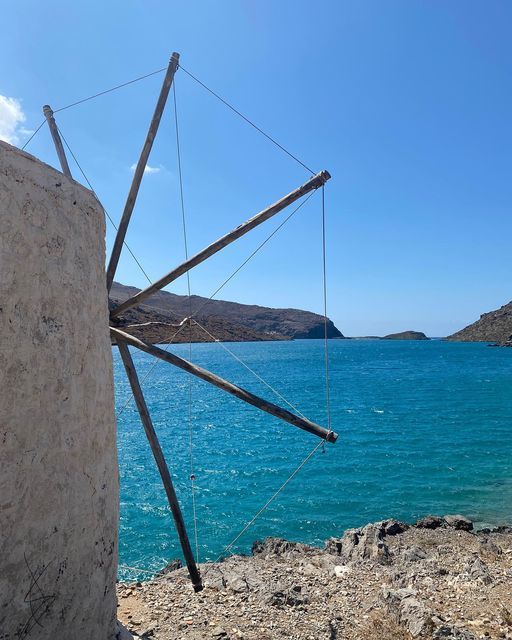
Karpathos. Tristomo
Photo by George Spanos
25 notes
·
View notes
Text

Locals travel by boat to Diafani, a charming coastal settlement on the north side of the Greek island of Karpathos. Locals seek to make sure they can welcome tourists while also preserving their traditional way of life. Photograph By Ciril Jazbec, National Geographic
Can This Greek Island’s Hidden Treasures Lure Travelers?
Karpathos, overlooked even by Greek travelers, balances rising tourism with sustaining its ancient traditions.
— Photographs By Ciril Jazbec |By Fahrinisa Campana | March 15, 2022
Rolling her sleeves up past her elbows and tying a full-length apron around her waist, Evangelia Agapiou is ready for her next cooking class. Today, she’s making makarounes, the traditional pasta of Karpathos, a Greek island in the Aegean Sea halfway between Crete and Rhodes. There are only two ingredients in these inch-long curly shells: flour and water. But there’s a whole lot of work—and history—behind what makes them so special.
Which is exactly what Agapiou wants to show the island’s visitors. “Many people think that pasta comes from the Italian occupation, but we had makarounes long before the Italians arrived,” she explains. Italy first invaded Karpathos in 1912, occupying the island for nearly four decades.
Speaking to a small group of travelers, Agapiou peppers her cooking instructions with a history of the island, its traditions, and the locals’ deep connection to the land and sea.
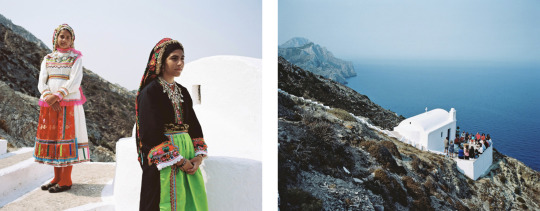
Left: Young women dress in traditional outfits for the May celebration of Saint Irene in the village of Olympos, also known as Olymbos. Right: A secluded church perched on a cliffside near Olympos overlooks the Aegean Sea.
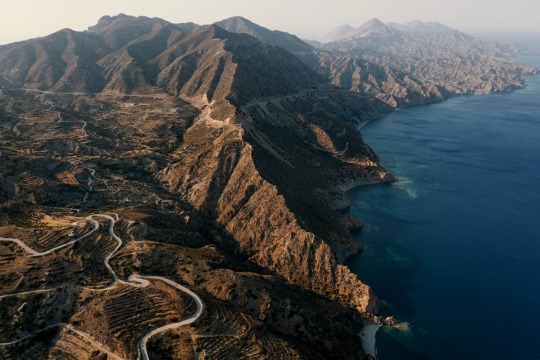
Hidden coves scallop the quiet northeast coast of Karpathos, the second largest island in the Dodecanese archipelago which includes the popular islands of Rhodes and Patmos.
Despite being the second largest island in the Dodecanese after Rhodes, there’s an acute feeling of disconnectedness on Karpathos. The ferry from Athens takes 28 hours, and although Karpathos has an international airport, there are direct flights from only a handful of countries, such as Italy, the Netherlands, and Belgium.
Karpathians have also managed to maintain a deep sense of self-sufficiency and independence, especially on the northern side of the island where most families still take up farming and shepherding to survive. In many households, cheese and butter is made with milk from their sheep and goats, and it’s not uncommon for families to produce their own honey, wine, and olive oil.
But things are changing on the island. In recent years, Karpathos has experienced a steady increase of tourists who are looking for a more off-the-beaten-path experience and to avoid the large crowds on more popular islands. This has brought palpable financial benefit to the island, but a host of other problems along with it—the scarcity of natural drinking water and the increasing need for a proper recycling facility, to name but two.
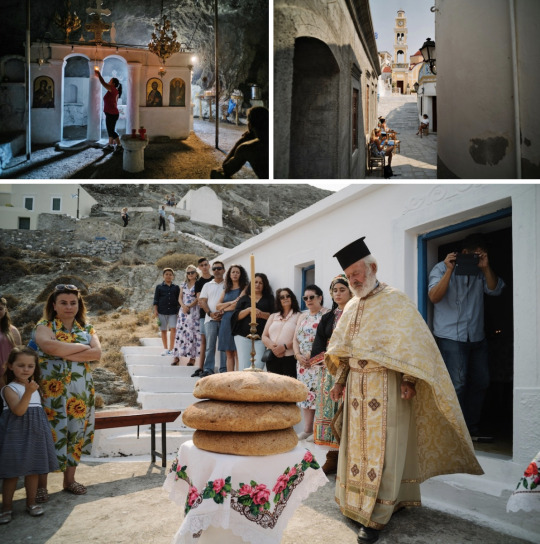
Top Left: An ancient cliffside path from the Karpathian village of Avlona leads to this cave in the ruins of Vrykounda, a town that was inhabited until the sixth century. The small chapel inside is now dedicated to St. John the Baptist. In Olympos, congregants celebrate the Feast of Transfiguration in August. In Olympos, congregants celebrate the Feast of Transfiguration in August. Top Right: While exploring Olympos’s narrow lanes, visitors will find artisan handicrafts for sale and outdoor cafés for dining on local foods such as makarounes, a handmade pasta. Bottom: In Olympos, congregants celebrate the Feast of Transfiguration in August.
Compared to tourist hot spots such as Mykonos and Santorini, islands that have long struggled with issues like proper waste management and potable drinking water, Karpathos has one advantage: its late arrival to the tourism industry. This has given the locals time to examine what’s been happening on other islands, which, says Agapiou, has helped them “avoid many problems and not focus on mass tourism like it’s the only solution.”
The Rising Tide of Tourism
Until recently, Karpathos’ only summer visitors were the children and grandchildren of locals who had moved abroad to America from the 1950s to the ’70s and who would spend their summer months visiting relatives.

In 2016, Agapiou founded Ecotourism Karpathos, when she realized that the island, still under-the-radar for even most Greeks, was starting to see more tourists during the summer months. They were specifically interested in outdoor activities—wind surfing, trekking, and bird watching—as well as local Karpathian traditions, such as the annual Easter celebration when locals don colorful traditional clothing.
Agapiou provides opportunities ranging from trekking tours that include a beach cleanup to stays in solar-powered accommodations.
“My vision is to help people here in Karpathos—which isn’t a touristic island like Mykonos, Santorini, Crete, or Rhodes—see a different side of tourism,” she explains. “I saw how, in 10 years, our society changed because of mass tourism, how our traditions have been lost now.”
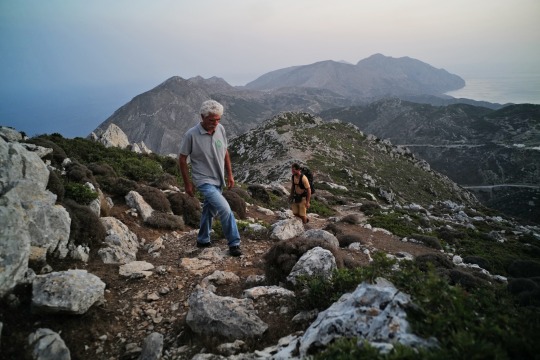
A hike up the Profitis Ilias mountain rewards visitors with views of the coast and access to an enchanting white church at the peak.
Another problem is the very real danger the island faces of environmental degradation due to the lack of proper collection, transport, treatment, and disposal of waste that’s produced on the island, especially during the summer months when the population of 4,000 increases exponentially. In 2019, the island welcomed about 190,000 visitors.
“It’s a big problem for us, because we don’t have the recycling capacity,” admits Andreas Tsagkaris, who works as a tourist consultant for the Municipality of Karpathos. “It’s really bad for tourists and for locals, because it gives a bad reputation to the island.”
There has been a recent push, however, to reduce single-use plastic take-away coffee cups, straws, and shopping bags. As tourism grows, Tsagkaris says, “we’ll have to do something [more] about this.”
Focusing on Slow Tourism
The Cycladic island of Paros in the central Aegean Sea could provide a model for success. Paros is well on its way to becoming Greece’s first single-use plastic-free island, thanks to the work of organizations like Clean Blue Paros, an initiative of Common Seas, a United Kingdom-based social enterprise.
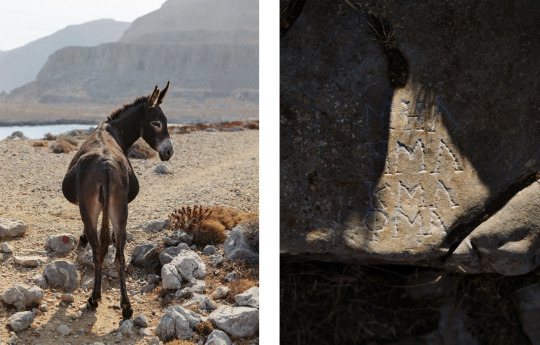
Left: A donkey halts along the trail to the ancient Karpathian city of Vrykounda. Right: Relics of the island’s ancient civilizations can be found along the trail to Vrykounda.

Left: Many women in Olympos continue to wear traditional black dresses and headscarves. Right: A young girl celebrates the Feast of Saint Irene in May with traditional loukoumades with honey and sesame.
Paros has had a more robust tourism industry for a longer period of time than Karpathos, but “the work that we’ve done can be replicated across the Greek islands with certain things being modified because of size and all sorts of other parameters,” says Zana Kontomanoli, project lead for Clean Blue Paros.
Kontomanoli says that Karpathos is capable of attracting a different type of tourist—people who care about the environment and are happy to pay more. “It’s slower, in terms of financial growth compared to mass tourism, but there’s something beautiful about growing more organically.”
One way the island can avoid mass tourism is by extending the tourist season with activities that happen during the off-season in Greece. This includes bird watching tours during the migration of the Eleonora’s falcon, which make a months-long pitstop on Karpathos before continuing on to Madagascar.
An important aspect of Agapiou’s work is involving as many locals as possible—whether it’s through demonstrations of traditional winemaking or through night fishing excursions with local fishermen.
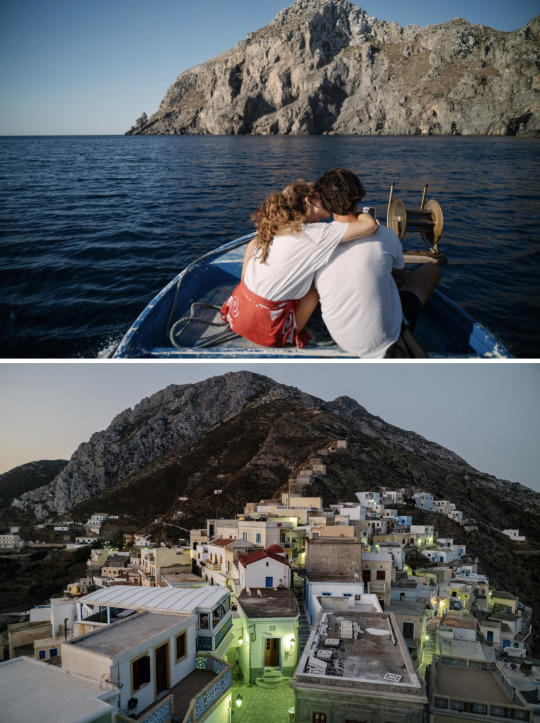
Top: A couple takes a boat to the village of Diafani, where coffee shops and bars line the promenade along the picturesque beachfront. Bottom: The sun rises over the village of Olympos, which stretches across both the east and west slopes of the mountain.
“It’s actually a community business, because everyday in our tours we have many locals involved,” she explains. “And, of course, we always share all of the benefits. This is ecotourism.”
In this way, Agapiou also hopes that the locals will begin to see why ecotourism, instead of mass tourism, is the way forward for Karpathos. “Sometimes people are confused with this definition,” she says, as she drops makarounes by the handful into a pot of boiling water with a healthy dose of sea salt collected from the island’s seashore.
For the final step, she’ll serve the makarounes topped with a traditional crumbly, tangy goat cheese, made by Agapiou’s mother; caramelized onions, grown in her family’s gardens; and stewed goat, from her family’s own herd.
“In English, the definition of ‘eco’ is more ‘ecological,’” Agapiou says. “‘Ecos’ in the Greek language means the home, the land, the community. So, this is ecotourism—to bring people together.”

Early morning is an ideal time to hike up Profitis Ilias to the chapel at the top.
— Fahrinisa Campana is a reporter covering stories about gender, migration, climate change, and human rights issues.
— Ciril Jazbec is a Slovenian photographer whose work often focuses on the effects of climate change.
1 note
·
View note
Photo

🎉Χρόνια πολλά σε όλους τους Νικους και Νίκες! Βοηθεια σε ολους τους ναυτικούς ο Αη Νικόλας!!🎉 Πάντα με υγεία και καλές θάλασσες!!🧿⛵ 🥳Happy name day to everyone called Nikos or Niki! 🥳 As St.Nikolaos is the patron Saint of the seamen, we wish them always to sale safe !! 🙏🚣♂️ #nikosboat #nikoshotel #diafani #Karpathos #Greece #olymbos #xmas2020 #santaclause #seamen #nameday #nikos #sea #travel #karpathosisland (στην τοποθεσία Diafani, Dhodhekanisos, Greece) https://www.instagram.com/p/CIdTD-4huw2/?igshid=1txjrhijcsfh
#nikosboat#nikoshotel#diafani#karpathos#greece#olymbos#xmas2020#santaclause#seamen#nameday#nikos#sea#travel#karpathosisland
0 notes
Link
Karpathos. Olymbos Feel free to visit my site for other pictures and articles about Greece: elladastinkardiamou.tumblr.com/tagged/pictures
0 notes
Text
Olympos: the village where time stood still
Olympos: the village where time stood still
Olympos, Karpathos. Olympos or Olymbos, is both the most traditional and the most remote settlement on the Greek island of Karpathos. The village is located in the extreme north of the island and until recently it was not accessible by car. The only connection with the outside world was Diafani harbor. A three kilometer (2 mi) paved road connects the village with the port. Diafani is the supply…
View On WordPress
0 notes